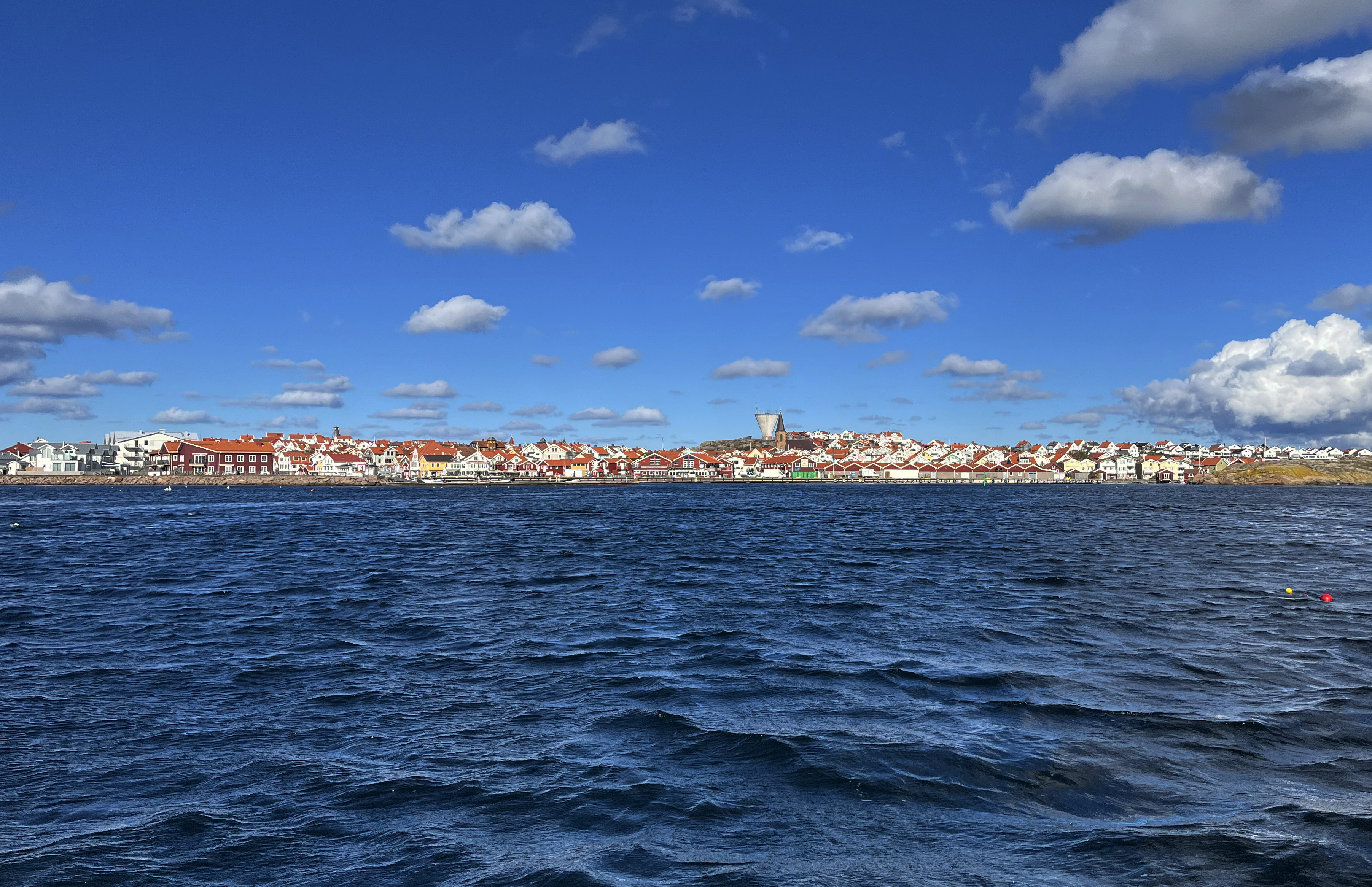About SMÖGEN
Smögen is an old fishing community in the outermost sea belt of Bohuslän, which is Sweden's westernmost province. With its unique environment, Smögen is one of Sweden's most popular tourist destinations.
HISTORY
The history of Smögen, like its settlement, is tied to fishing and the handling of fish and shellfish. The town was first mentioned in writing in 1594, and the community grew during the four major herring fishing periods that occurred during the years 1556-1589, 1660-1680, 1747-1809 and 1877-1905. During the 19th century, Smögen also became an important health resort, and tourism began to flourish.
In 1939, 85% of the population on Smögen was directly dependent on fishing for their livelihood. There were then 325 active fishermen on the island, some of whom also periodically engaged in freight shipping, two canneries and the trade in fish and shellfish flourished. In the same year, Smögen was visited by around nine hundred "beachgoers" who stayed at one of the island's two hotels, a guesthouse or in private rooms.
Holidays were made statutory in Sweden in 1938. Two weeks of holiday were in effect until 1951 when Swedes were given three weeks of holiday. Four weeks were introduced in 1963 and changed to five weeks in 1978. As the Swedes' statutory holiday weeks increased, Smögen's tourism increased.
In 1963, around 30,000 tourists came to Smögen and by the end of the 1970s, the tourism industry had grown and Smögen was now one of the most visited tourist resorts along the west coast. Room rentals had increased significantly and many boathouses and warehouses along Smögenbryggan had been converted into shops, cafés and restaurants. In the summer of 1975, there were sixteen summer shops along the boardwalk.
At the same time, Smögen was the most important fishing location outside the Gothenburg region. On the island there were about a hundred professional fishermen with thirteen shrimp trawlers and the same number of fish trawlers, still two factories for preserving mainly shrimp, a boatyard and a sailmaker and no less than five export companies.
In the years up to today, Smögen's fishing fleet has unfortunately decreased drastically and the number of active fishermen can probably be counted on the fingers of two hands. The few who remain can, however, make a living from their fishing, which mainly involves shrimp and crayfish fishing.
Tourism on Smögen, on the other hand, continues to increase every year. People from all over the world come to the island to experience Smögen's fantastic nature, its rich cultural heritage and, not least, to take part in the island's well-known restaurant and nightlife.
SMÖGEN BOARDWALK - Sweden's most visited boardwalk
From Gothenburg, it takes just under two hours to drive north to Smögen. When you drive over the Smögen Bridge from the mainland in Kungshamn, you first come to the northern part of the community, Hasselön. Here are residential areas, fishing huts and beautiful natural areas.
Continue for five minutes and you will arrive at Smögenbryggan - Bohuslän's most famous tourist destination by far. On the almost 600-meter-long pier, the boathouses are close together and house both shops, cafes, restaurants and nightclubs. Take a walk along the pier and enjoy the boating life, the archipelago activities, the lively crowds during the summer months and the taverns' selection of locally caught fish and shellfish. Some of the taverns are open all year round.
From Smögenbryggan there are also several boat trips to nearby Hållö and Kungshamn, as well as cruises through the beautiful Sotekanalen. You can also go on a seal safari or go deep-sea fishing with a local fisherman.
Seaside Accommodation
On Smögen there are many different types of accommodation: cottages, private rooms, hostels and hotels - all with seaside locations. In the past, society people who wanted to enjoy the resort's seaweed baths and entertainment options made a pilgrimage to Hotell Smögens Hafvsbad. Today, the seawed scrubbing has been replaced by enjoyable spa treatments and various bathing rituals.
Other accommodation tips are Sea Lodge Smögen and Makrillvikens hostel.

